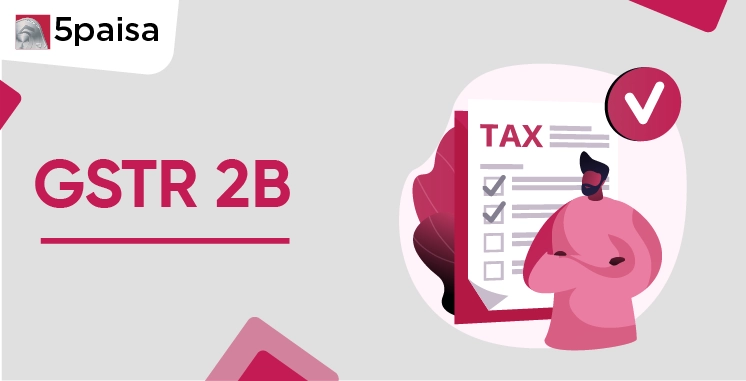Content
- Introduction
- What is GSTR-2B?
- Key Characteristics of GSTR-2B
- How GSTR-2B Works?
- Features of GSTR-2B
- How to Access GSTR-2B on the GST Portal?
- Benefits of GSTR-2B for Taxpayers
- GSTR-2B vs GSTR-2A: Key Differences
- Challenges in Using GSTR-2B
- Conclusion
Introduction
The introduction of GSTR-2B has significantly streamlined Input Tax Credit (ITC) claims for businesses registered under Goods and Services Tax (GST). Introduced by the GST Council in August 2020, GSTR-2B is an auto-drafted statement that provides taxpayers with a static month-wise summary of eligible and ineligible ITC. Unlike GSTR-2A, which dynamically updates, GSTR-2B remains unchanged once generated, ensuring more stability and accuracy in tax reconciliation.
This article explores GSTR-2B in detail, covering its features, benefits, differences from GSTR-2A, impact on ITC reconciliation, and compliance requirements.
More Articles to Explore
- Difference between NSDL and CDSL
- Lowest brokerage charges in India for online trading
- How to find your demat account number using PAN card
- What are bonus shares and how do they work?
- How to transfer shares from one demat account to another?
- What is BO ID?
- Open demat account without a PAN card - a complete guide
- What are DP charges?
- What is DP ID in a demat account
- How to transfer money from demat account to bank account
Disclaimer: Investment in securities market are subject to market risks, read all the related documents carefully before investing. For detailed disclaimer please Click here.
Frequently Asked Questions
No, GSTR-2B is auto-generated and cannot be amended. Any discrepancies must be corrected by the supplier in their GSTR-1. The corrected details will reflect in the following month's GSTR-2B, impacting ITC availability.
Yes, ITC on capital goods is reflected in GSTR-2B if the supplier has correctly reported it in their GSTR-1. However, businesses must ensure they claim ITC on capital goods as per the GST Act’s rules and conditions.
Mismatches require reconciliation with suppliers. Businesses must verify missing invoices, incorrect entries, or delays in supplier filings. ITC claimed in GSTR-3B should align with GSTR-2B to prevent ITC reversal, interest, or penalties.
Yes, exporters must ensure their ITC claim aligns with GSTR-2B, as any mismatch may delay GST refunds. Incorrect or missing ITC in GSTR-2B due to supplier non-compliance can impact working capital and require supplier rectification.
QRMP taxpayers use GSTR-2B for quarterly ITC reconciliation. Since ITC depends on supplier filings, businesses must track timely invoice reporting in GSTR-1 to avoid cash flow issues while filing their quarterly GSTR-3B.


